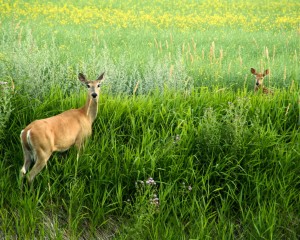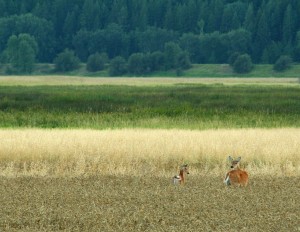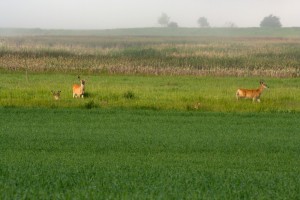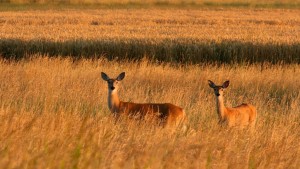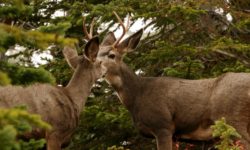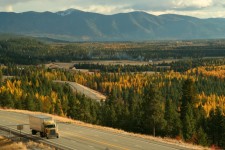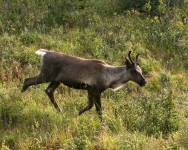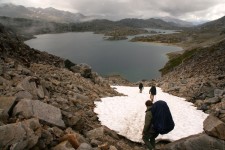Grazing in fields in early morning, seeking shelter in the woods during mid-day, browsing in city parks in the evening and crossing highways at night, the signature white tail of the white-tailed deer is well known. From the fields of the Kootenai Valley to the oak forests of the Appalachian Mountains, the white-tailed deer seems to be everywhere. They thrive in every state except Alaska, Hawaii, California, Utah, and Nevada. They range northward into all the Canadian provinces except Newfoundland, Labrador and Prince Edward Island, and even inhabit the southern reaches of the Yukon and Northwest Territories. They range southward into Mexico, Central America and South America.
The hardwood forests of Indiana are vastly different from the forests of northern British Columbia but the adaptability of the white-tailed deer allows it to survive in both. The white-tailed deer is one of the few mammals that occupies such a wide range of latitudes and diverse habitats–mainly because they are opportunistic feeders. They feed on agricultural crops, grasses, shrubs, fruit, berries, apples, acorns and mushrooms.
Agricultural fields are a bed and breakfast to white-tailed deer–breakfast being the crop of choice and bed being the vegetative cover along field edges. A nearby irrigation ditch makes it complete. White-tailed deer followed the advancement of agriculture across the continent and expanded its range in the process. What once was prairie filled with unpalatable grasses became a buffet of lush green crops.
Logging, often associated with clearing fields, also enabled the expansion of their range. Old-growth forest doesn’t provide much forage within reach of deer whereas early successional habitats created by harvesting, thinning and burning provide ample fresh growth at ground level for several decades.
Logging and agriculture also create boundaries between two vegetative types (such as a field and forest), which attracts white-tailed deer because of the vegetative diversity and availability of cover. Likewise, woodlands near cities provide the cover deer need to sleep along with easy access to a wide array of gardens, ornamental shrubs and fruit trees for food.
Not only are white-tailed deer adaptable in what they eat and where they live but also in their behavior. Depending on the habitat, group size and migration can vary, such as smaller herds occupying forested habitats. Some white-tailed deer migrate between fawning areas and wintering ranges, while others do not.
The most adaptable of the white-tailed deer are the yearling bucks–they are the pioneers of the species. Every year 40 to 50 percent of the yearling bucks leave the herd around November–not because of population density or availability of food but because of hormonal changes associated with the rut.
If yearling bucks wander into new habitat, a viable population won’t be established until young does join them. Unlike yearling bucks, young does won’t leave the herd until it overpopulates the area. Therefore, new habitats won’t show population growth until nearby populations are on the upswing.
The overabundance of white-tailed deer in an area is one of the most challenging problems facing wildlife managers, as well as gardeners, farmers, fruit tree owners, and vehicle drivers because they seem to be everywhere.

